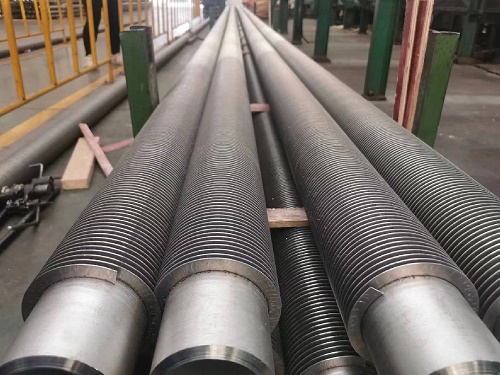What is a large diameter finned pipe?
Large-diameter finned pipes are made of large-diameter steel pipes. Large-diameter finned pipes are the basis for the radiator to have excellent heat dissipation performance. Large-diameter finned pipes are one of the ways that finned pipe radiators can meet the heat demand in large-area workshops.
Base pipe material for large diameter finned pipes:
Large Diameter Carbon Steel Pipe ASTM A106 Gr.B; Large Diameter Alloy Steel Pipe ASTM A335 P22; Large Diameter Stainless Steel Pipe ASTM A312 TP304/316; Large Diameter Nickel Base Steel Pipe ASTM B163/ ASTM B705
Fin material of large diameter finned pipe:
Carbon steel fins, stainless steel fins
Dimensions of large diameter finned pipes:
The diameter of large-diameter finned pipes is generally 2 inches, 2.5 inches, 3 inches, and some larger ones are 5 inches and 6 inches.
The large-diameter finned pipe type is divided into different models according to the size of the steel pipe used, but its appearance is similar, but the volume of the radiator is different. The different sizes are to meet the needs of different users for heat dissipation. different needs of the device.
Types of Large Diameter finned pipes
Large diameter high frequency welding solid fin pipe; large diameter high frequency welding serrated fin pipe
The scope of use of large diameter finned pipes:
Large-diameter finned pipes are widely used. Large-diameter finned pipes are widely used in industrial workshops, agricultural greenhouses, food drying plants and other places. In the heating system and drying system, it exerts its excellent heat dissipation effect to meet the different needs of different places and users for different temperatures.
Comments
Post a Comment